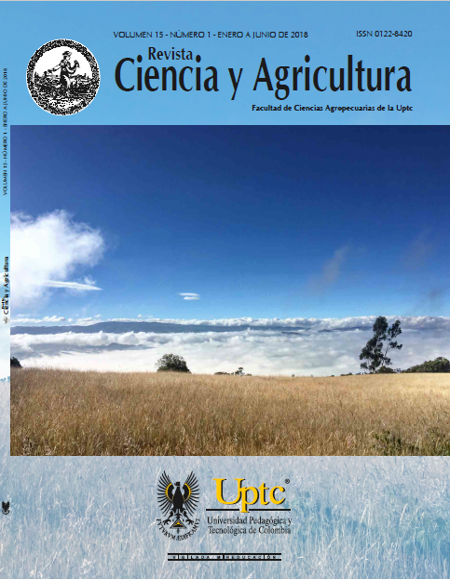Digestibility of diets with growing levels of defatted coconut flour in growing rabbits

Abstract
In order to evaluate the influence of defatted coconut flour on the apparent digestibility coefficients (ADC) of nutrients for growing rabbits, five diets were elaborated with increasing levels of defatted coconut flour (0 %, 10 %, 20 %, 30 % and 40 %). The diets were given to 50 Chinchilla rabbits, distributed in a totally randomized design, with an experimental period of 12 days. The ADC of the dry matter (MS), gross protein (PB), gross fiber (BFC), organic matter (MO) and ash (Czs) were determined. The inclusion of defatted coconut flour into the rabbit’s diet had not effect on the ADC of MS, with average values close to 60 %. High values of ADC of PB were observed (74.92 % and 77.86 %), which decreased for levels of defatted coconut flour of 30 % and 40 %. The ADC of BFC behaved similar to the PB, with mean values between 44.66 % and 49.80 %. The rabbits showed a good use of the ash content with ADC from 66.80 % to 72.99 %, which were more elevated for diets with 0 % and 10 % of defatted coconut flour. The results indicate that the rabbits carried out a high absorption of the inorganic compounds.
Keywords
coconut byproduct, cuniculture, digestive use of nutrients, monogastrics animals
References
- (1) Vasconcelos CA. Utilização do Farelo de Côco em dietas para coelhos destinados ao abate. Dissertação de Mestrado. Fortaleza-Ceará. Universidade Federal do Ceará Centro de Ciências Agrárias. Programa de Pós-graduação em Zootecnia. 2007.
- (2) Valverde DM. Usos de la morera (Morus alba) en la alimentación del conejo: El rol de la fibra y la proteína en el tracto digestivo. Agronomía Mesoamericana. 2010; 21(20): 357-366. DOI: https://doi.org/10.15517/am.v21i2.4900
- (3) De Blas C., Mateos GG. Feed formulation. Ed: Blas C., WIiseman J. In: Nutrition of the rabbit. Cambridge: CAB International. 2010: 222-232. DOI: http://doi.org/10.1079/9781845936693.0222. DOI: https://doi.org/10.1079/9781845936693.0222
- (4) Association Official Analytical Chemistry-AOAC. Official methods of analysis. 11 ed. Washington DC. 1995.
- (5) Van Soest PJ., Robertson JB., Lewis BA. Methods for dietary fiber, neutral detergent fiber and nonstarch polysaccharides in relation to animal nutrition. J. Dairy Sci. 1991; 74: 3583-3597. DOI: http://doi.org/10.3168/jds.S0022-0302(91)78551-2. DOI: https://doi.org/10.3168/jds.S0022-0302(91)78551-2
- (6) Matterson LD., Potter LM., Stutz NW., Singsen EP. The metabolizable energy of feed ingredients for chickens. Storrs: The University of Connecticut; Agricultural Experiment Station. 1965.
- (7) Duncan B. Multiple Range and Multiple F Test. Biometrics, 1955; 11: 1-7. DOI: http://doi.org/10.2307/3001478. DOI: https://doi.org/10.2307/3001478
- (8) Ferreira VPA., Ferreira WM., Saliba SEO., Scapinello C., Teixeira AO., Kamwa EB. Digestibilidade, cecotrofia, desempenho e rendimento de carcaça de coelhos em crescimento alimentados com rações contendo óleo vegetal ou gordura animal. Revista Brasileira de Zootecnia. 2006; 35(4): 1696-1704. DOI: http://doi.org/10.1590/S1516-35982006000600017. DOI: https://doi.org/10.1590/S1516-35982006000600017
- (9) De Blas JC., Mateos GG. The nutrition of the rabbit. Cambridge: CAB International. 1998: 241-253.
- (10) Fierro JF. Valoración nutritiva de piensos comerciales para conejos. Máster de Zootecnia y Gestión Sosten ible: Ganadería Ecológica e Integrada de la Universidad de Córdoba. 2014: 1-11.
- (11) Faria HG., Ferreira WM., Scapinello C., Oliveira CEA. Efeito da utilização de dietas simplificadas, à base de forragem, sobre a digestibilidade e desempenho de coelhos Nova Zelândia. Revista Brasileira de Zootecnia. 2008; 37(10): 1797-1801. DOI: http://doi.org/10.1590/S1516-35982008001000012. DOI: https://doi.org/10.1590/S1516-35982008001000012
- (12) Quadros ARB., Moreira I., Paiano D. Avaliação nutricional da casca de soja integral ou moída, ensilada ou não, para suínos na fase de crescimento. Acta Scientiarum. Animal Sciences. Maringa. 2007; 29(1): 31-38. DOI: https://doi.org/10.4025/actascianimsci.v29i1.249
- (13) Josianny L. Casca de soja na alimentação de coelhos em crescimento em substituição aos fenos de alfafa e de Cost cross. Dissertação apresenta, como parte das exigências para a obtenção do título de Mestre em zootecnia. Universidade estadual de Maringá. Centro de ciências agrárias. 2009.
- (14) Arruda AMV., López DC., FerriraWM. Digestibilidade aparente dos nutrientes de rações contendo diferentes fontes de fibra e níveis de amido com coelhos em crescimento. Revista Brasileira e Zootecnia. Viçaosa. 2002; 31(3). DOI: https://doi.org/10.1590/S1516-35982002000500013
- (15) Scapinello C., Falco JE., Furlan AC., Faria HG. Valor nutritivo do feno da rama da mandioca (Manihot esculenta, Crantz) para coelhos em crescimento. Revista Brasileira de Zootecnia. 1999; 28(5): 1063-1067. DOI: http://doi.org/10.1590/S1516-35981999000500023. DOI: https://doi.org/10.1590/S1516-35981999000500023
- (16) Martins A., Dessimoni R., Gonçalves R. Desempenho Produtivo e Atividade Microbiana Cecal de Coelhos Alimentados com Dietas Contendo Diferentes Níveis de Amido. Rev. Bras. Zootec. 2000; 29(3): 762-768. DOI: http://doi.org/10.1590/S1516-35982000000300018. DOI: https://doi.org/10.1590/S1516-35982000000300018
- (17) Villamide MJ., De Blas C. Nutritive value of cereal grains for rabbits. Journal Appl. Rabbit Research. 1991; 14(2): 144-147.